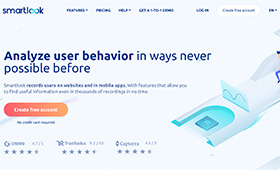7 UX Questions You Need to Know Before Getting to the Design
When it comes to user experience designing, one can easily deem its dynamics as highly enticing. In spite of this, they can be quite complicated too. There is a multitude of factors which need to be taken into consideration, and if you’re just starting out in the UX domain, then the professional advice of an authority in the domain is irreplaceable.
However, some key points can also be discovered by answering a range of UX questions regarding these dynamics, which need to correlate and work together for the best results.
Expectations, business strategies, creativity, psychology – all these need to work together in order for the result to be a pleasing one, not only on your side, but most importantly on the user’s side. If you formulate specific questions according to these areas of interest, then you’ll automatically manage to create a specific strategy which will work wonders in terms of website appearance and functionality. To start with, here are 7 UX questions which you probably haven’t answered before:
1. How often does the site need to be updated?
It’s very important to give your website a fresh look, introduce new features or update it from time to time. However, the update frequency is just as important, since it is the one which poses as a direct effect on your audience. Remaining constant forever is not a good idea at all, but too frequent changes over a short period of time can easily confuse and send the users away from your site. Therefore, according to your website’s audience and niche segment, you may require small but frequent changes or significant ones induced over a longer time period. In this regard, the best suggestion is the one that an UX professional gives you.
Let users know what's going on when a website or application is having an update.
2. What is the starting point?
Everyone needs a starting point, even if we’re talking about UX design where creativity knows no boundaries. In this regard, the starting point should be a simple one, something that inspires you. You do not need to combine all your ideas for a simple launch, and there doesn’t need to be any flashy or animated additions either. All that you need to concentrate on is the core concept in its whole, which needs to remain simple and sharp in contrast with all else.
3. What are the users’ expectations?
When it comes to users’ expectations, you need to take into account the artistic and psychology areas. By combining them both, you get a pretty general example of what users’ definition can be. The user experience is an element which relies more on visual, rather than on aesthetics. Therefore, everything needs to be visually pleasing, yet feature a smooth and sensory flow. There needs to be something that catches user’s attention and makes him feel at ease while browsing the site.
4. When should users’ reactions be measured?
Undoubtedly, metrics are an important element in UX design, as they allow you to forecast what is going to happen during the next period. However, they must be used with care. If you choose to do it right from the start or very often, than there’s a high chance for the results’ effectiveness to decrease. It’s a good idea to plan on introducing new modifications, but you should take into account their major impact on user experience and the site’s overall functionality. Therefore, you need to evaluate and introduce them wisely.
5. What restriction types should be allowed?
There are plenty of elements to consider when it comes to the terms of usage or service. It’s not recommended to leave the terms open-ended, as this will usually lead to exploitation on the users’ side. At the same time, too many restrictions are not good either, since they can make the customer orient towards the competition. A balance between these elements is needed, and one should carefully asses the legal implications carefully, with the help of an UX professional.
6. How much customization ability should be permitted?
If the user experience is too open-ended, then there’s a high chance for it to not appeal to the majority. On the other side, if the customizations are too heavy on the user’s side, than it can easily lead to abuse and resource depletion. In this regard, it would be best to consult an UX professional and find his opinion regarding the particular site you’re working on.
7. What customer service type should be offered to the users?
Obviously, customer service is quite important when it comes to the user’s satisfaction, and therefore you should not allow budgetary restrictions and creativity issues set you apart. An UX professional would be the most indicated person to help you create a customer service strategy that’s adequate to your needs. This strategy will be specifically tailored for you, and it will into account the funds you have available and your businesses’ long-term goals and objectives.








i would love to hear from you about UX fundamentals, Latest UX Trends, Points to be taken care of while Designing…
Thank you